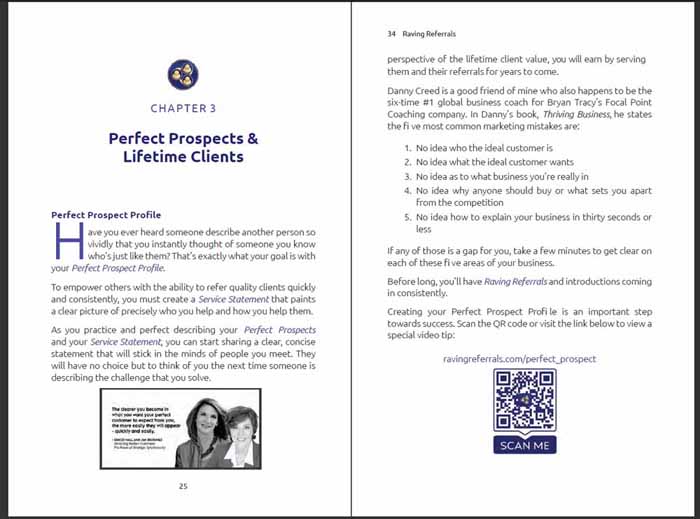Short Business Book 101: Main Matter Content
In previous Short Business Book 101 articles, I outlined The 5 Essential Sections In a Short Business Book, Effective Business Book Cover Design Tips, and The Front Matter Content.
This structure and flow I am sharing in this mini course is based on years of marketing and sales experience and the publishing of over 250 short business books for myself and others.
The Main Matter Content
The Main Matter Content section comprises the primary chapters that deliver the core message and value your readers are seeking.

When planning the Main Matter Content of your short business book, it's crucial to pinpoint the key topics that will resonate most with your audience.
Start by understanding your readers' pain points and what solutions they are searching for.
Conduct surveys, engage with your target audience on social media, and analyze the questions and feedback you receive from clients or customers. This research will help you identify the most relevant and pressing issues to address in your book.
Remember, your short business book is NOT intended to teach readers everything you know about the topic of the book. They are meant to provide valuable information and then guide the reader to the next step, which is typically contacting you.
For your Main Matter Content, I recommend 5-7 main content chapters, but based on your specific book, you may have more.
The typical length of these chapters is 1,000–1,500 words depending on how many chapters you have. If you have more chapters, they tend to me shorter and if you have less, they tend to be longer.
These chapters are focused on the BIG IDEA of your book and should help the reader achieve the PROMISE of your book, but without overloading them with unnecessary bloat.
Your main chapters should align with your expertise and the unique value you bring to the table. Aim to cover subjects that not only answer your readers' questions but also position you as a thought leader in your field.
By focusing on what matters most to your audience, you ensure your book is both engaging and useful, increasing the likelihood that readers will find it valuable and share it with others.
The Power of Bite Sized Chapters
In the world of short business books, brevity is not just a virtue—it's a necessity. Your readers are busy people looking for quick, actionable insights.
Long-winded chapters are daunting and may cause readers to lose interest. Here’s why shorter, more focused chapters are key:
Enhanced Readability: Short chapters make your book more digestible. They allow readers to quickly grasp key points and move through the content at a brisk pace, maintaining their engagement and interest.
Clear Focus: Each chapter should focus on a single topic or idea. This clarity helps readers understand and retain information more effectively. It also makes it easier for them to refer back to specific sections when needed.
Actionable Insights: By focusing on specific topics, you can provide more detailed and actionable advice. Each chapter should offer clear takeaways that readers can implement immediately, increasing the practical value of your book.
Flexibility: Shorter chapters give you the flexibility to cover a broader range of topics without overwhelming your readers. You can explore various aspects of your subject matter in a concise and focused manner.
If you are looking for a simple yet effective formula for your Main Matter Content, I suggest you come up with 5—7 frequently asked questions, should-ask questions, secrets, tips, or ideas that an ideal customer would find useful, and write your chapters around this content.
By “chunking” your content into 5—7 main ideas, you are making it easy for your readers to read your short business book and making it easier for you to write it.
Consider Focused Chapter Calls-to-Action
One powerful strategy to enhance the impact of your short business book is to end each Main Matter chapter with a specific call-to-action (CTA).
This approach not only provides additional value to your readers but also serves as a valuable list-building opportunity. By offering further resources such as videos, downloadable content, or additional information online, you can deepen the engagement with your audience and drive them to take action beyond just reading your book.
This strategy leverages the interactive nature of digital content, making your book a living, evolving resource.
Readers appreciate the extra effort to provide them with more detailed insights and practical tools, which enhances their overall experience and satisfaction. By integrating chapter focused CTAs that guide readers to additional resources, you ensure that your book is not just a standalone product but a gateway to a richer, more interactive learning experience.
I recently interviewed CEO and author, Brandon Barnum on The Author Factor Podcast and he shared how he created chapter-specific videos for each of his main chapters and used hyperlinks and QR codes to allow readers to quickly access them (see below).

Use Your Main Matter Content to Help More People
The Main Matter Content of your short business book is where the core value lies for your readers who are looking for your advice, help, and guidance.
By identifying the most important topics and crafting shorter, focused chapters, you ensure your book is both engaging and impactful.
Additionally, incorporating specific chapter-end call-to-actions, such as links to videos or downloadable resources, enhances the reader experience and offers valuable list-building opportunities.
This approach not only provides immediate value but also builds a lasting connection with your audience.
Remember, the goal is to create a short business book that not only informs but also drives action, setting you apart as a trusted authority in your field.
